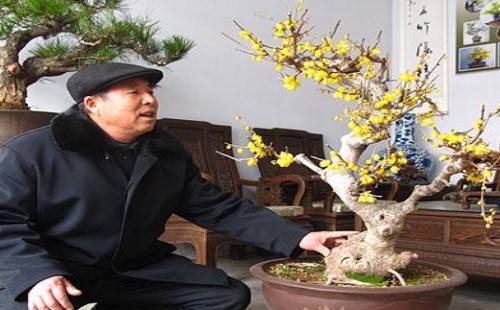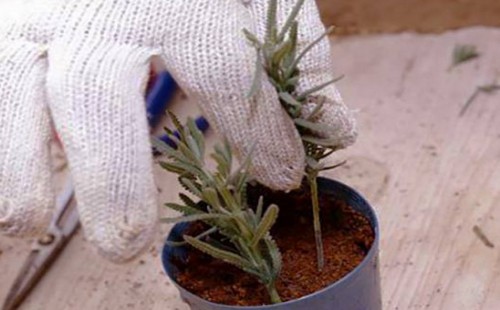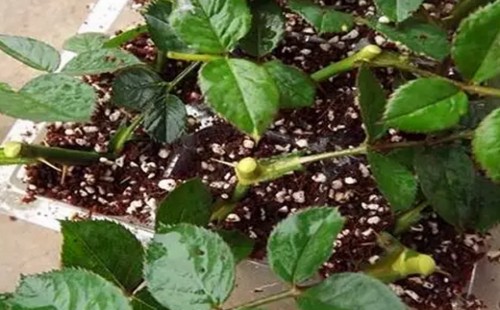What kind of grafting does primrose use?
Primrose is a very important landscaping tree species in China, because of its high ornamental value, whether used to beautify the urban environment or to make bonsai, it is very durable. As a kind of bonsai tree species with outstanding ornamental effect, primrose is favored by the majority of bonsai lovers. Primrose mostly uses cuttings and ramets to breed young plants, but many people like to use grafting to breed potted seedlings.

The exquisite spring primrose bonsai seen in the flower market is very beautiful in shape, but its price is not cheap, so it is believed that it has a good development prospect for a long time. And its unique flower posture is often difficult to find alternative products in the bonsai world. The plant type of primrose bonsai grafted is often better, and the ornamental value can also be doubled. So, what is the grafting of primroses?
According to the growth habits of primrose and the characteristics of families and genera, there are many tree species suitable for grafting, but the most suitable tree species as rootstocks are water wax, wild spring, spring exploration, jasmine, fragrance and so on. As the genetic relationship between these tree species and primrose is closer, so the grafted primrose is more conducive to survival, plant shape is more beautiful, more attractive.
The grafting of primrose is usually done by abdominal grafting, which is also a very commonly used grafting technique. The characteristic of the original abdominal grafting method is that it is suitable for tree species with relatively small rootstocks, especially coniferous species, which is not only easy to operate, but also easier for grafted seedlings to survive. More importantly, the requirements of abdominal grafting on rootstocks are not particularly high, and they can continue to be grafted in the same year after the grafting has survived, and even multiple grafts can be carried out on one kind of rootstock. Next, the editor takes the water wax seedling as an example to briefly introduce the method of grafting primrose by means of abdominal grafting.
First of all, the potted salmon seedlings with a breast diameter of more than 2 cm were selected as rootstock species and grafted at a height of about 1 meter before germination in early spring. The scion can use the same year's primrose branches, cut in length of about 8-10 cm, and then abdominal grafting. After the grafting interface is made on the rootstock, the scion is inserted into it, and the grafting site is wound several times with plastic film. Finally, the plants were covered with plastic bags, and when the grafted seedlings survived and sprouted, the plastic bags were pierced through several holes to breathe and refine the seedlings.
When the seedlings grow to a certain height, the bag can be removed, and then gradually provide light for it, but to avoid the strong light period of direct light, to prevent the young seedlings from wilting. Then wait for the opportunity to coring the grafted seedlings to promote the young plants to sprout more lateral branches, so that the potted plant shape is more plump, at the same time, we can also start to cultivate the crown according to the bonsai design needs.
Time: 2019-06-07 Click:
- Prev

Can lavender be cut?
Lavender is the first choice of family potted plants by many potted friends because of its striking fragrance and high ornamental value. So, can lavender be cut? In fact, lavender can be propagated by sowing, cuttage, striping, stem splitting and so on. However, all things considered, as a family potted user
- Next

How can summer roses be cut?
Rose has long been known as the queen of flowers, because potted roses grow elegant, graceful posture, and its flowering period is very long, can bloom from August of the first year to April of the next year, if placed on their balcony a few potted roses, will undoubtedly become a beautiful scenery
Related
- Fuxing push coffee new agricultural production and marketing class: lack of small-scale processing plants
- Jujube rice field leisure farm deep ploughing Yilan for five years to create a space for organic food and play
- Nongyu Farm-A trial of organic papaya for brave women with advanced technology
- Four points for attention in the prevention and control of diseases and insect pests of edible fungi
- How to add nutrient solution to Edible Fungi
- Is there any good way to control edible fungus mites?
- Open Inoculation Technology of Edible Fungi
- Is there any clever way to use fertilizer for edible fungus in winter?
- What agents are used to kill the pathogens of edible fungi in the mushroom shed?
- Rapid drying of Edible Fungi

